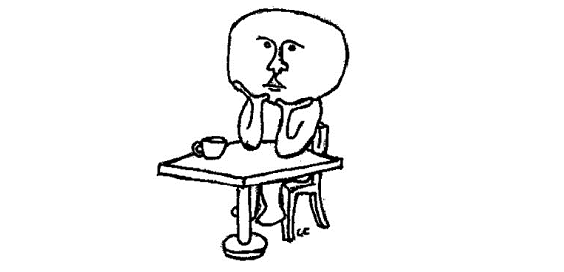If you could build Jurassic Park in real life, would you? This question no longer belongs firmly in the realm of science fiction.
On July 30, 2003, a team of Spanish and French researchers implanted DNA samples of a Pyrenean ibex, an animal that has been extinct since 1999, into a living surrogate goat mother to produce a new cloned Pyrenean ibex. Following this successful implantation, scientists believe they can repeat the process to bring more species back from extinction. Dinosaurs do not make the cut (their DNA is too old to be used), but such species as the wooly mammoth, saber-toothed tiger and 22 others are considered candidates for de-extinction.
The possibility of bringing back long-extinct species appeals to our basic human desire to undo our past wrongs by reversing the damage we have done to species and renewing biodiversity. Unfortunately, mankind’s past harms to the environment cannot be undone so easily. Ian Malcolm, Jeff Goldblum’s character in “Jurassic Park,” lectures about chaos theory and how fundamentally unpredictable the world is, at least he does until a giant Tyrannosaurus Rex comes to chow down on our unsuspecting protagonists. My point is not to say that de-extinction will create something dangerous like the Tyrannosaurus rex (although that would be sort of awesome). Instead, I think that de-extinction should not be pursued because it is unpredictable and as likely to harm both resurrected and currently living species as it is to help them.
If resurrected, de-extinct species would face numerous threats to their well-being and survival. For one, there is no way to guarantee that the resurrected species would match their genetic predecessors. Ben Novak, a genetic engineer working at University of California-Santa Cruz, argues de-extinct species could reach up to an 80-90 percent match with their genetic predecessors, while Beth Shapiro, a fellow researcher with Novak, expresses skepticism.
Using the passenger pigeon as an example, Shapiro says, “How close are we to having an exact passenger pigeon? Infinitely far away. A hybrid of some sort, with a less-than-random selection of genes that hopefully impact the behavior or phenotype of a band-tailed pigeon and make it act more like a passenger pigeon.” In other words, bringing back a species like the passenger pigeon could result in the creation of a kinda-sorta hybrid species rather than the real deal. With such unpredictability involved in the process, it’s anyone’s guess as to how the de-extinct species’ behavior, survival ability and evolutionary traits will be affected.
In a worst-case scenario, de-extinct species could be far less healthy than their genetic predecessors. The research team that brought back the Pyrenean ibex already discovered that the de-extinction process is fraught with difficulties. The Pyrenean ibex that the team cloned only lived for several hours and then died due to neurological complications. Perhaps scientists could discover a way for the revived species to live a full life span, but the possibility that they might experience genetic defects is high enough to warrant caution.
Even if scientists eventually manage to remove the kinks from the de-extinction process and eliminate the health risks involved, they cannot guarantee that the resurrected species could survive in the wild. Returning the resurrected species back into their original habitat might be out of the question; there is no way to eliminate the factors such as over-hunting, habitat change and competition with other species that drove these species extinct in the first place. For example, the passenger pigeon, which had a population in the billions, was wiped out in a span of only 50 years of industrialization. Part of their survival mechanism involved flying together in flocks numbering in the thousands to ward off predators. It would be quite an incredibly difficult task to breed the number of passenger pigeons required for their population to adapt its key survival mechanism in captivity, where it historically had trouble breeding, and to find this population a suitable habitat after land changes eliminated many possible options.
Let’s make the assumption, though, that scientists could somehow manage to resurrect extinct species in a way that ensured their well-being and survival. Scientists still could not foresee how bringing back extinct species would affect other species. Sure, there is a possibility that resurrecting de-extinct species might benefit biodiversity. Returning to passenger pigeons, this species used to drop seeds in forests, contributing to forest growth and benefitting the habitats of other species. If brought back, though, passenger pigeons could easily become an invasive species and carry harmful diseases. It is simply a bad idea to create such an unpredictable shift.
Resurrecting extinct species could also draw much needed attention and funding away from protecting currently endangered species. In the past 500 years, human activity has sped up the natural process of species extinction by 1,000 times, resulting in the extinction of 1,000 species and the endangerment of 20,000 species. Meanwhile, scientists such as Stewart Brand, head of the organization Restore & Revive, plan to spend $50 million attempting to bring the passenger pigeon back from extinction. Scientists like Brand have their priorities mixed up. Why spend so much money on bringing back the passenger pigeon when he could use that same money to help protect a currently living species?
It is possible that scientists could address all the doubts and concerns involved with the de-extinction process. Years later, the public could look back on this time of uncertainty and laugh at their old fears. Bringing back the Tasmanian tiger — of course that was a good idea! Until then, people should remain wary of the de-extinction process, which seems to pose more ecological risks than benefits, and do as John Arnold, another Jurassic Park character, suggests and “hold on to your butts.” We could be in for a bumpy ride.



